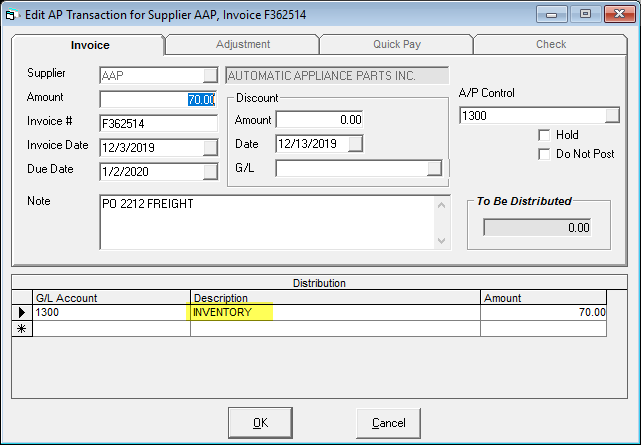Freight Allocation
The purpose of freight allocation is to apply the freight costs that either come from the manufacturer with the invoice or a third party billed separately to the overall item or serial cost. In most cases, freight allocation is primarily used for serial inventory but it does allocate freight to items also. The extended cost of the serial number will be reflected in the gross margin and the cost of goods sold. It is important to remember, if you use this feature, your freight invoices must be allocated to inventory asset not freight expense since this amount will become part of the serial cost.
Freight allocation is accessible from two locations: the purchasing menu or from PO detail.
Purchasing Menu
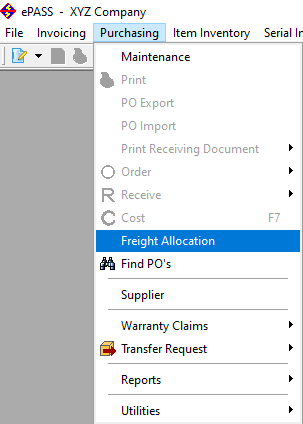
Launching the freight allocation screen from the purchasing menu will require the user to enter the supplier invoice number for detail to populate.
PO Detail
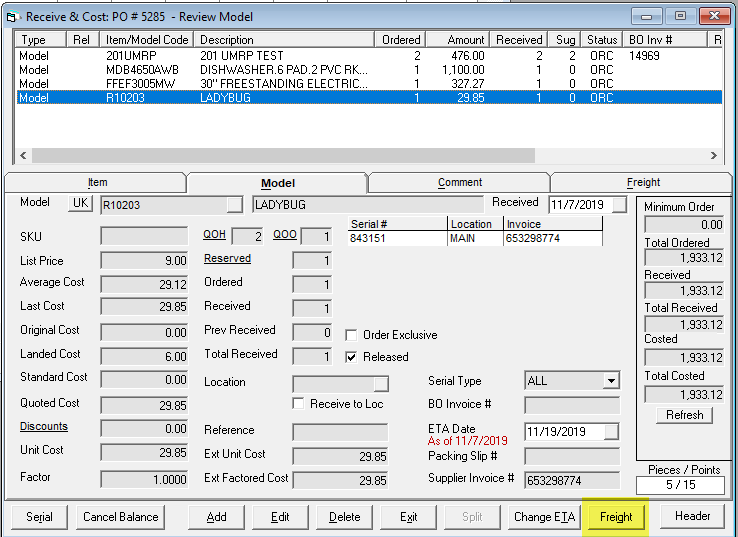
Launching the freight allocation screen from PO detail (with a supplier invoice already applied) will auto populate some detail into the freight allocation screen.
Freight Allocation Screen
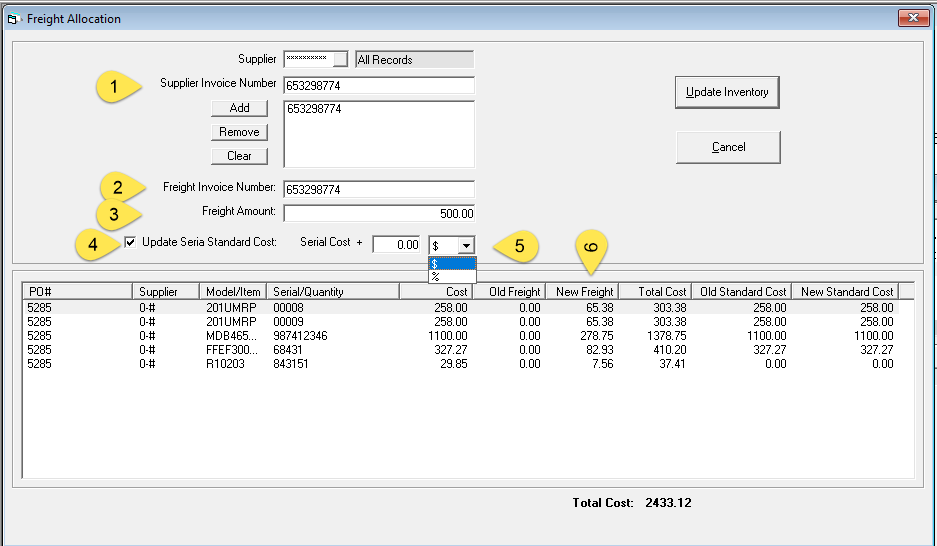
- The supplier invoice number will be pre-filled when launched from PO detail. You can add additional supplier invoice numbers in case one freight bill covers multiple invoices from the vendor.
- The freight invoice number is mandatory. Use the supplier invoice number when the freight is included in the invoice with the product.
- Total freight amount.
- & 5. You can have EPASS recalculate the standard cost on each serial number to be the new cost once freight has been applied plus a flat dollar amount or percentage.
- The columns that are important to focus on are as follows:
- Cost: The original cost of the serial number
- Old Freight: The previous amount of freight. If you have two freight invoices, you must make the freight amount the total of all freight invoices and make the freight invoice number a combination of both freight invoice numbers. I.E. 1234/abcd
- New Freight: The revised freight amount
- Total Cost: The extension of cost plus new freight
- Old Standard Cost/New Standard Cost: Only relevant if using #4; the amount will calculate automatically
How freight is allocated
Freight is evenly divided amongst all the pieces based on their value. I.E. A $100.00 product will get half the freight as a $200.00 product.
EPASS takes the ratio of (Individual Product Cost/The total value of all products) multiplied by Freight Amount.
Once the freight allocation screen has been filled in, click the Update Inventory button to apply the freight to the cost of the models and items. Once you see ‘done’ on the bottom, you can close out of the screen.
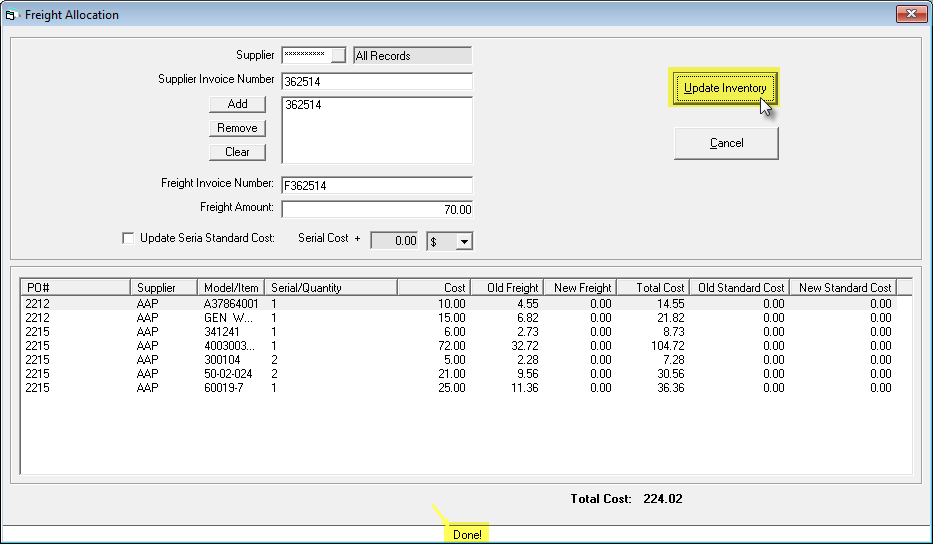
If applying freight to an invoice that has already had freight applied, EPASS will give you a warning message to confirm if you want to continue.
Freight allocation vs the Freight tab in PO detail
Please be aware that the freight tab in the PO detail and the freight allocation feature are not connected at all. The purpose of the freight tab is to be able to enter the expected freight amount, the amount entered here will add to the total value of the PO but does not tie into freight allocation.
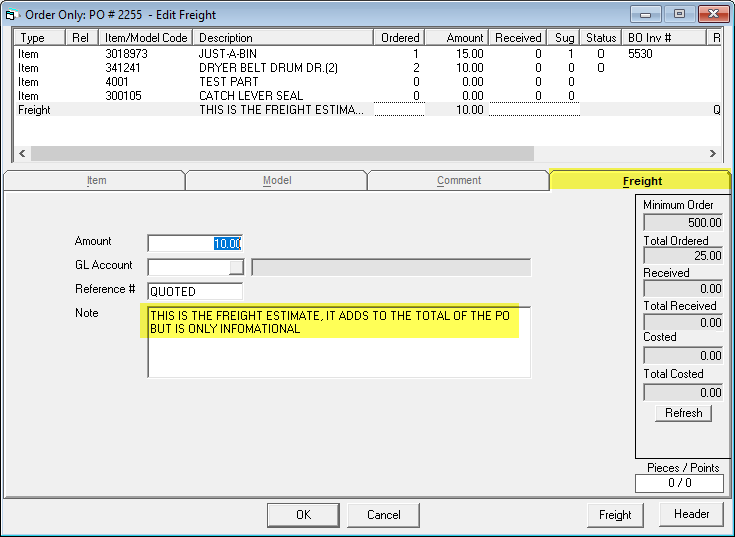
Allocating Freight Inventory Asset
If using the freight allocation feature, accounts payable needs to be aware as the invoices need to be applied as an inventory asset.
